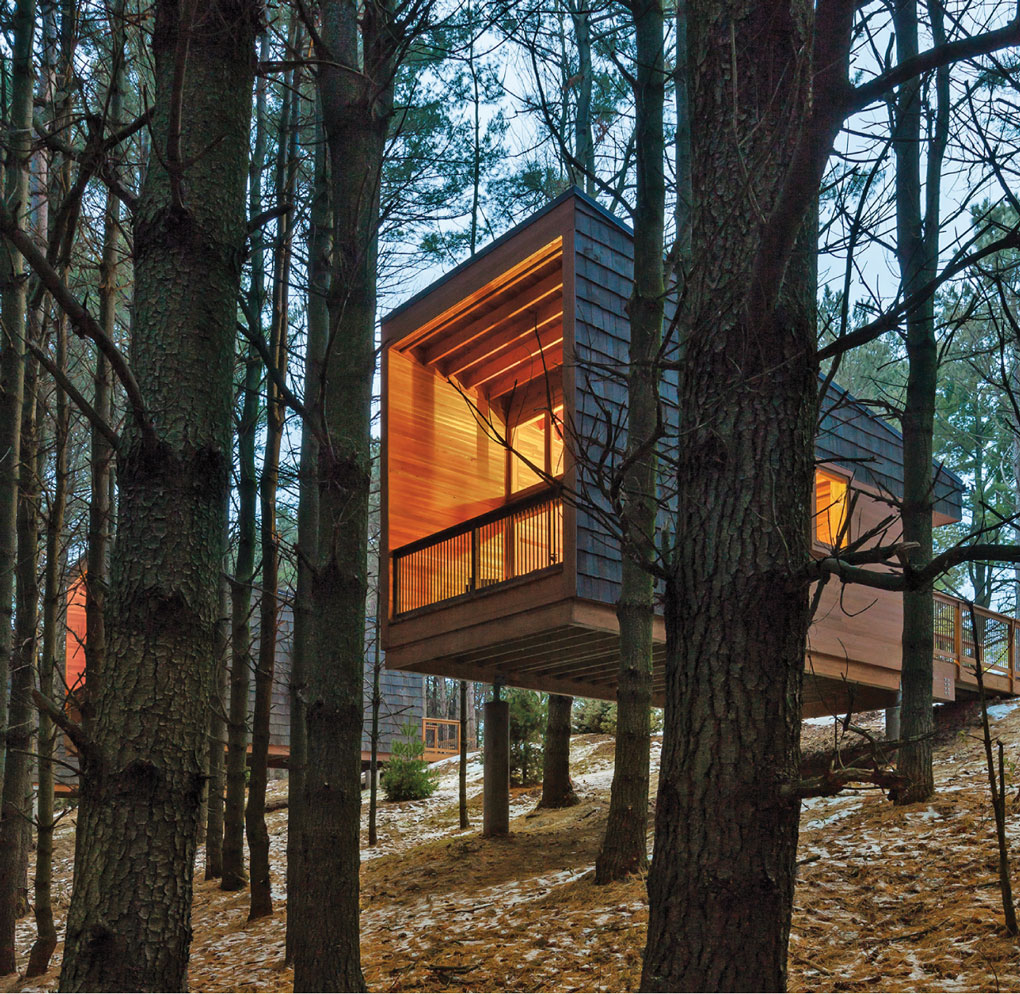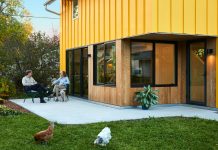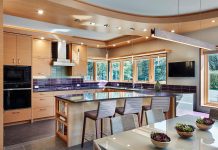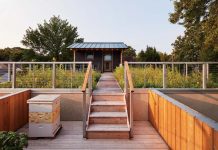Architect and “cabinologist” Dale Mulfinger, who has not only designed scores of cabins but also written several books on cabin life and design, has detected a trend: An upsurge in the number of cabins with sleek, open modern design he’s been asked to design. “It’s only a minor propensity,” Mulfinger says. “It’s not like a 70 percent flip over” from the woody, historic, log-stacked cabins most people are used to seeing, staying in or commissioning. “But up until five years ago, no one asked for something modern.” Now Mulfinger has several on the boards, and one nearly finished in northern Wisconsin.
Of course, cabins designed via a modernist sensibility are not new to our region. Ralph Rapson designed his Glass Cube for his family in 1974, with glass walls and suspended floors that allow occupants to feel as if they’re floating in the landscape. Julie Snow’s Weekend House on Lake Superior is a study in cool, minimalist, abstraction. David Salmela has designed numerous cabins in northern Minnesota, including the Hyytinen Cabin, that showcase his distinctive, Scandinavian-inflected, and minimalist approach.
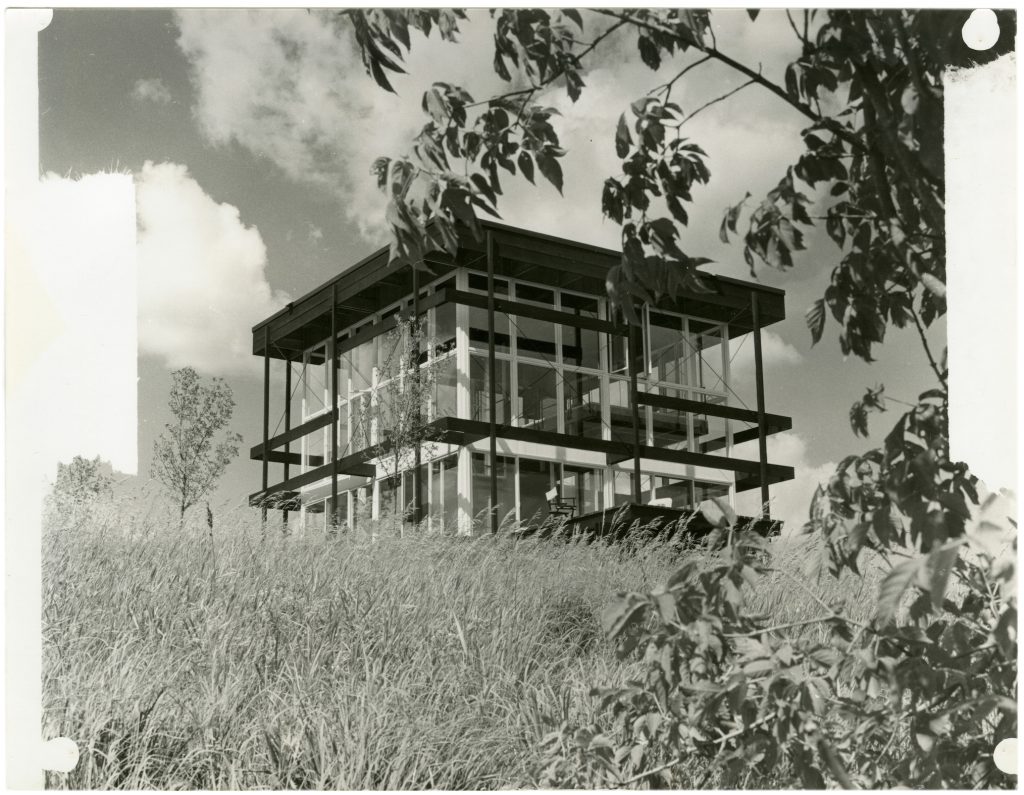
“But that’s what they do,” Mulfinger says of these architects’ approaches to cabin design. “Clients come to them knowing that’s what they’ll get. With me, well I do most everything. And I’ve noticed an uptick in people wanting something more modern.” In a blog post this spring, Mulfinger probed this design shift. “Absent are the usual words of quaint, nostalgic, rustic, and log,” he wrote of his clients’ requests. “Refreshing, clean lines now replace those words, along with light filled, and open spaces. They still seek a place of relaxation and contemplation, but they may ask to achieve that under a flat roof.”
He also notes that several books on modern cabins were published before the 2008 recession. But he’s also noticed that just as Dwell’s pages have increased, the thickness of Architectural Digest has decreased. A recent Buick ad on television shows a young mother pulling up to her modern home in a new SUV, as the camera pans to the more traditional and older cars and homes next door.
“There’s a subtle message being conveyed,” Mulfinger says. “For that age group, something stripped down, cleaner, fresh and airier in design is more desirable. It’s part of the IKEA/Design Within Reach aesthetic permeating our culture. This also points to a market condition.” Other signatures of the new, modern cabin are black-painted siding or charred wood, black window frames, an open airy floor plan with lots of glass bringing in light and views, blond or light-wood interiors, minimalist fireplaces, and décor from IKEA, Marimekko, Design Within Reach and local makers.
To see these aspects in action in modern cabins by Twin Cities architects, check out David Strand’s Northern Lake Home in the August issue of Midwest Home; the Whitetail Woods Camper Cabins by HGA; or the Pelican Lake Modern by Peterssen/Keller.
